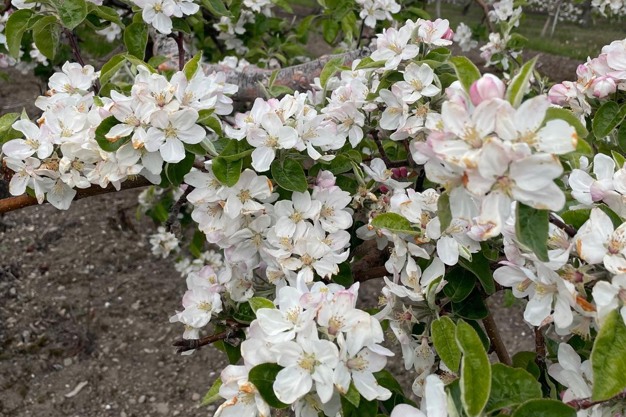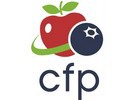While this year's winter cold snap in British Columbia has affected the province's cherry and stone fruit production, apples look to be spared for the upcoming 2024 crop this fall. "The blossom was a little early in the south. Some pockets of certain regions in British Columbia experienced spring frost damage. However this damage was limited to specific areas and we remain very optimistic about the upcoming apple crop," says Gord Morrison, senior director of sales at Consolidated Fruit Packers (CFP), a division of Star Produce Ltd., noting those specific areas saw 20-30 percent frost damage. "However, that is not the case across the entire Okanagan Valley."
As the apple buds develop through the spring, they do lose their hardiness to colder temperatures and the flowers in the south Okanagan were open for nighttime frosts. In the north though, there were one or two cold pockets, and the flowers weren't as developed there. "We are not seeing much damage at all in the north which is where the majority of the apples are grown in the Okanagan," he says. In all, though it is still very early in the season, CFP's volume may be slightly down compared to last season as some Honeycrisp blocks are looking light.
Looking back, last year in the Okanagan, there was early warm weather which caused a flash bloom, shortening the time frame for apple blossom. "This year the flowers are much more viable because the temperatures are much more favorable. With a longer blossom window, it is also allowing for better pollination," says Morrison. "Last year everything came on at once and there was a shorter window for that pollination."
 Morrison says that this year, the flowers are much more viable because the temperatures are much more favorable.
Morrison says that this year, the flowers are much more viable because the temperatures are much more favorable.
Cell division indications
After blossom and fruit set, which is happening now, the crop moves into cell division, and good weather at this stage also leads to more cells in the fruit. "That correlates to larger fruit size so we are positive that we are going to have some good fruit size this year based on what's happening right now," says Morrison.
Meanwhile, CFP continues on with its macro goal of improving overall apple quality and production in B.C., a goal that includes adopting new practices and technologies to grow high-quality fruit. It also has its field service experts available to support fruit growers in their efforts and Morrison says that better returns to growers is key. "They need to be in a positive position to invest in their orchards and technologies and practices," he says, noting those investments would be in things like new varieties that require less labor and produce greater yield. In turn, there is a feeling that Canadian retailers are also focusing more on supporting the industry and providing consumers with local apple varieties when they're available.
That investment also comes in technologies that will help growers contend with ongoing climate change–something B.C. has been especially dealing with in recent years between heat domes and rapid temperature changes. "We need to adapt to future environmental stresses caused by climate change and help growers modify their growing practices," Morrison says, noting that this might include planting climate-tolerant rootstock.
 For more information:
For more information:
Gino Boensch
Gord Morrison
Consolidated Fruit Packers (CFP)
Tel: +1 (250) 868-1400
https://cfp-ltd.ca/
